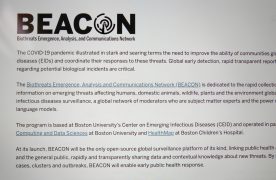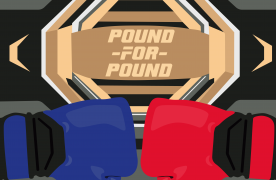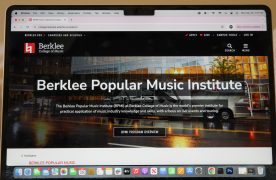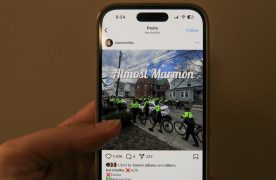Our parents grew up waiting for the daily newspaper to be thrown from the hand of a tween, riding their bike around the neighborhood. They held each section of the morning paper in one hand and flipped the flimsy pages with the other. Now, digital subscriptions are much more popular than home delivery service. At least, this is certainly true for The New York Times as its print subscriptions plummeted last year.
On Wednesday, The Times entered a partnership with Spotify, according to an article from Bloomberg. The news outlet and streaming platform created an offer for customers that will lower costs for both services. For anyone who purchases an “all-access” subscription to The Times, they will receive a free year-long subscription to Spotify Premium — all for just $5 a week.
This partnership comes after the news that The Times’ print sales have declined in recent years. Spotify Premium typically costs $9.99 a month. while a New York Times “all-access” subscription is $120 a year. This deal may be a steal for interested customers.
Many people already have Spotify Premium, which means The Times is losing a large market of the population who would be interested in a subscription to the streaming service. Spotify will hopefully help The Times appeal to a younger market, but the main issue with this offer is that most people who want Spotify Premium already have it and aren’t incentivized by a New York Times subscription. Those who already pay for premium won’t even be eligible for this offer, cutting off a huge market of the population who would otherwise be interested in this free service. Creating a connection between news and music is also a stretch. Those interested in reading daily headlines are probably not the same people who want access to a large music playlist.
While Spotify may be most utilized by a younger audience, this offer wasn’t created to save college students money. The Times offers $1 digital access subscriptions to students and Spotify offers its premium service to students for $4.99 a month. The student discounts are essentially the same price as this “special” offer from The Times and Spotify. This deal would make more sense for older adults with steady incomes who want to start both services on a trial run. As this promotion only lasts for a year, the concept of a dry run makes even more sense.
It’s safe to say that Spotify didn’t need this partnership, as its sales have been doing well. This offer certainly won’t hurt them, but the success of it has yet to be seen. Their partnership, however, might incite competition between other streaming services, including those outside of music. Will Amazon Prime or SoundCloud create similar deals with other major publications? This could be a new bidding war between journalism and the tech industry.
This offer might increase sales of digital subscriptions, but it won’t save their print publications. The sales from this promotional deal probably won’t be as profitable as The Times or Spotify expects it to be. One way to ensure success for this deal is to include print subscriptions. As this offer currently stands, it only includes access to the digital version of The Times. If they expanded the offer to print versions, it could be marketable to older generations that haven’t yet turned to the world of digital. This might be a way to save their print issues.
An additional reason why this offer won’t be successful is that nowadays, we need stories to be in our face for us to read them. Simply having a subscription doesn’t mean that people will read past the headlines. This offer is a good use of advertising but isn’t pushy enough. Free subscriptions motivate people to sign up, but not to participate. Trying to appeal to Spotify users means appealing to those who aren’t The Times’ usual audience. This could create an entirely new audience, or create one that isn’t interested in The Times to begin with.
This offer proves that news outlets are exploring advertising options. They’re moving outside the box, testing the limits of advertising routes to entice potential subscribers. All we hear as journalists from our family members or friends is “journalism is a dying industry,” but this is a perfect example of how the industry is simply evolving. The Times is reaching out to a new audience, one that would also be interested in Spotify. Though this offer isn’t the end-all for advertising, it is a good jumping off point for the way newspapers can think differently about promotional advertising.













